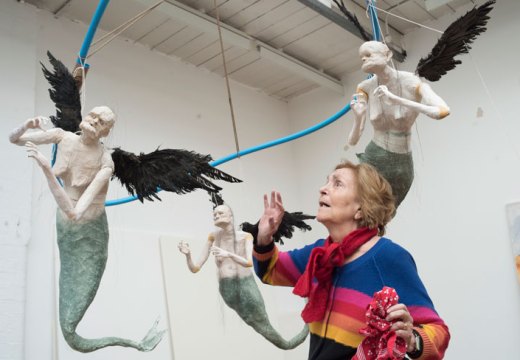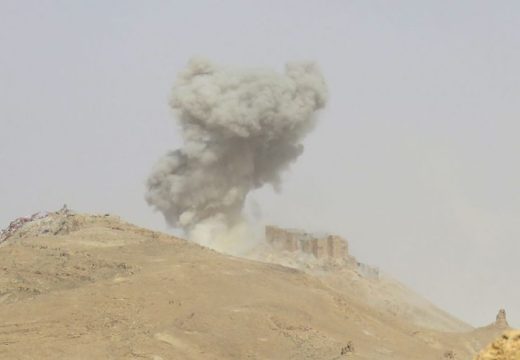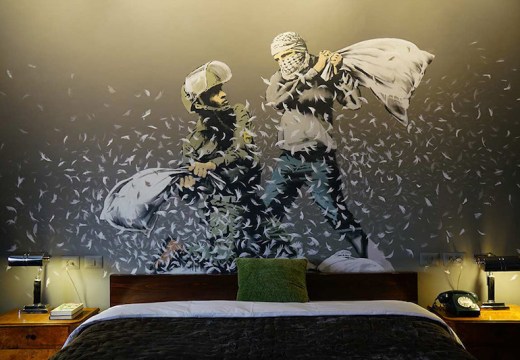The Artists’ Political Action Network already had a logo and an acronym (APAN) before it convened for its first public organising meeting on sunny afternoon in mid February. The group of artists had decided to join forces just two days after the election of Donald Trump to the U.S. presidency. Charles Gaines and Andrea Fraser were among the senior members; sculptor Kathryn Andrews and painter Tala Madani, both represented by L.A.’s polished David Kordansky Gallery, among the junior. ‘How can our actions have a direct impact?’ read the invitation they sent out to members of the Los Angeles art community, which sounded open-minded and progressive. But on the afternoon of the meeting, when attendees began arriving to discuss activism at 356 Mission, a five-year-old gallery and event space in the neighborhood of Boyle Heights, they encountered a group of protesters. ‘Boycott 356 Mission,’ a young man with a megaphone told art-worlders as they walked up to the green door of the building now affiliated with blue-chip New York gallery, Gavin Brown Enterprises. ‘Don’t cross the picket line!’
At first, it might seem illogical for protesters to picket a meeting about political activism, but given what’s been happening in downtown-adjacent Boyle Heights this year, their presence wasn’t a surprise. Boyle Heights has a history of activism that dates back to the 1940s, when its residents rallied to support the foreign-born against Red Scare related political hysteria, but this current wave of arts-targeted protesting began around November 2015. A mobile opera called Hopscotch, organised by the experimental company the Industry, set a portion of the show in Hollenbeck Park off of Boyle Avenue. Limousines would pull up, and the audience of three would disembark to see two characters share their first kiss as an ice cream vendor provided the soundtrack. Protesters interrupted performances and said things like, ‘This park is not for white people,’ the opera’s artistic director Marc Lowenstein told the Guardian in April 2016. On the opera’s last day, musicians from a local high school band drowned out the performers.
By summer 2016, Defend Boyle Heights, an alliance against gentrification in the 95-per-cent Latino neighborhood, had turned its attention to the art galleries moving in on the once-industrial corridors of Mission and Anderson Street.
In July, after a young non-profit called PSSST announced its opening in a building with a clean white exterior on 3rd Street, activists held a meeting at the nearby Pico Gardens housing project. They distributed information sheets acknowledging that PSSST, which planned to support marginalised artists, had a positive-sounding mission. But, explained the sheets, ‘only a block away from PSSST, the Boyle Heights residents have been fighting displacement’ for decades. Would PSSST’s building, formerly the headquarters of a frozen food company and now owned by an anonymous donor, be flipped for a profit? asked activists who showed up to protest the opening, even after the young non-profit postponed it. Defend Boyle Heights made it clear early on that they weren’t interested in negotiation. They called art spaces instruments of ‘artwashing,’ attempts by developers and politicians to clean up the area in order to make it more attractive to moneyed investors. They wanted galleries gone.
In addition to PSSST, at least 10 other space have opened in Boyle Heights over the past two years. Some, like Ibid., Maccarone and Venus Over Los Angeles, have prominent bases outside of L.A. Most are renting. One developer, Vera Campbell, owns a number of the buildings, as the L.A. Times reported last year. Articles on this burgeoning Boyle Heights art scene in the New York Times Style section, or in W Magazine, tended to describe the neighborhood as empty, abandoned. So while many activists know that the galleries themselves are not the cause of gentrification – Defend Boyle Heights has in fact compiled an extensive gentrification bibliography – they rightly view the rhetoric around these spaces as facilitating the process.
Protests have become aggressive, physically and verbally. MaRS gallery’s Robert Zinn Stark was shoved on the night in September when activists served galleries with oversized eviction notices while chanting, ‘These gentrifiers have got to go!’ PSSST, non-commercial and so always the most vulnerable new space, announced its closure on 21 February. The space became ‘so contested that we are unable to ethically and financially proceed,’ wrote its founders, Barnett Cohen, Jules Gimbrone and Pilar Gallego, via email. ‘While our closure might be applauded by some, it is not a victory for civil discourse and coalition building.’
A week before PSSST officially closed, scholar and curator Nizan Shaked arrived for the Artists Political Action Network (APAN) meeting and decided not to cross the picket line. In an article she wrote about her decision for the website Hyperallergic, she wondered why more artists had not been willing to join the picketers or engage them. ‘Are seasoned spectators of performance art really too sensitive […] to entertain a provocation that might force them, for a few minutes, to check their privilege?’ Later, APAN founder Charles Gaines responded to Shaked’s article with an essay of his own, circulated informally online. He described gentrification as ‘a complex sociological phenomenon that hardly anyone understands,’ saying this ‘lack of understanding’ fuelled the current predicament and ensuring through words easily perceived as condescending that divisions persist.
Lead image: used under Creative Commons licence (CC BY-SA 4.0; original image cropped)
Unlimited access from just $16 every 3 months
Subscribe to get unlimited and exclusive access to the top art stories, interviews and exhibition reviews.














![Masterpiece [Re]discovery 2022. Photo: Ben Fisher Photography, courtesy of Masterpiece London](http://www.apollo-magazine.com/wp-content/uploads/2022/07/MPL2022_4263.jpg)
It’s time for the government of London to return to its rightful home